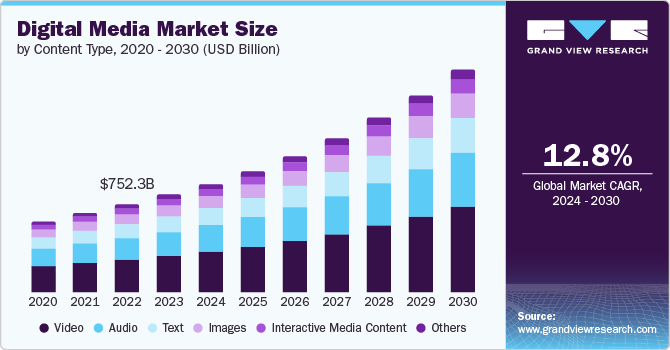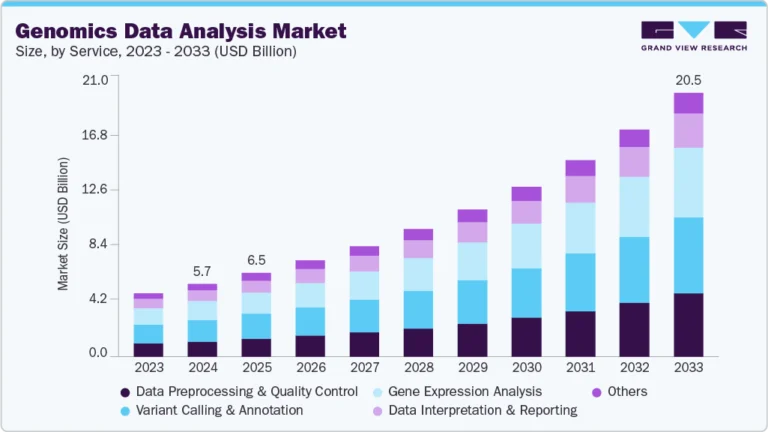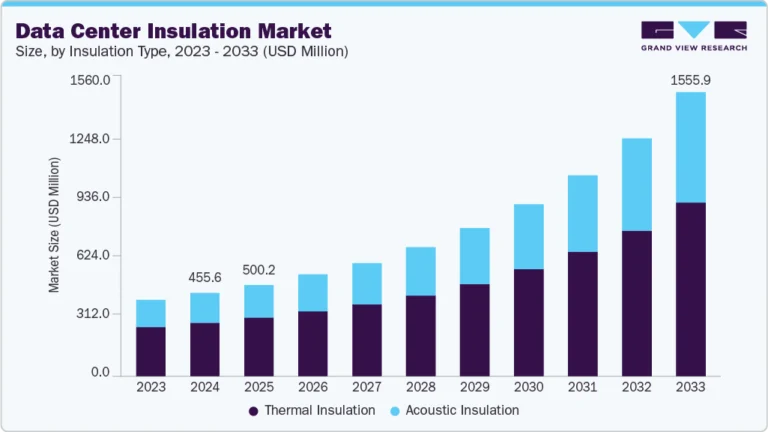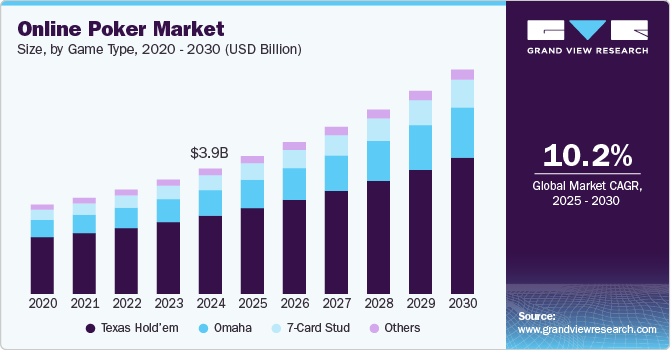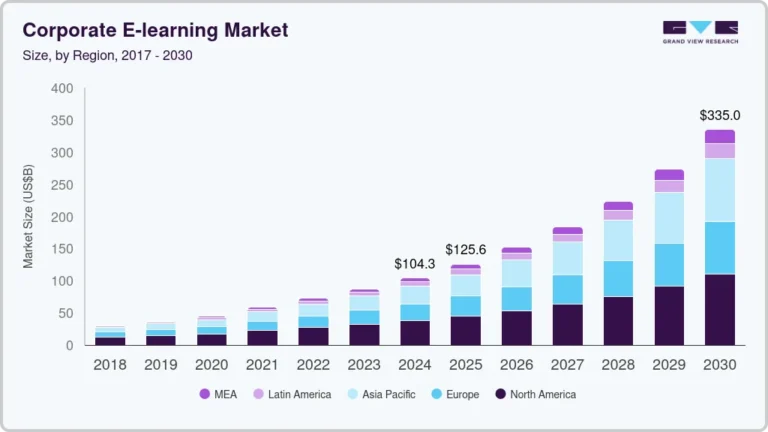Red Biotechnology Market Size, Share & Trends Analysis growing at a CAGR of 10.5% from 2025 to 2030
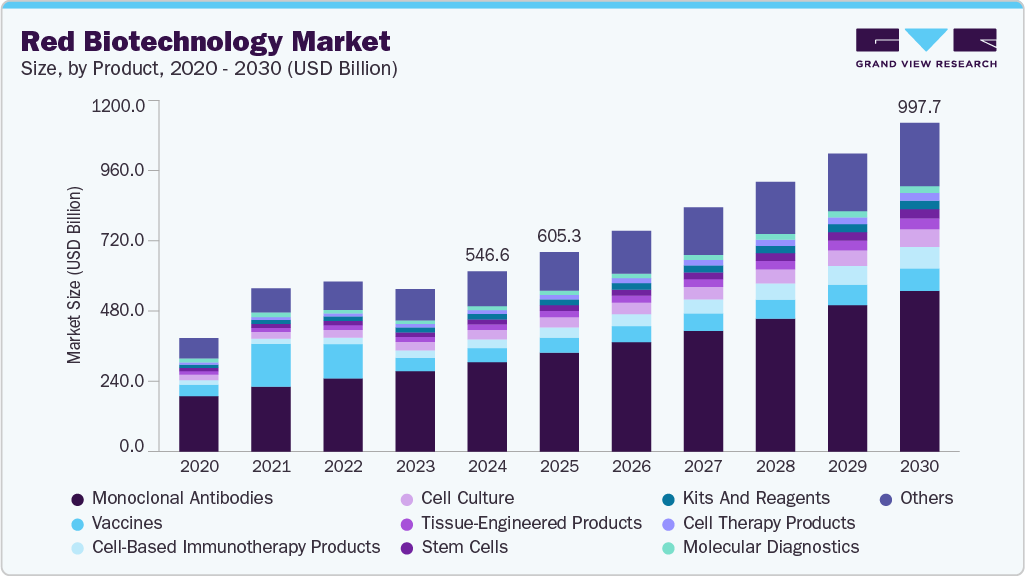
The global red biotechnology market size was estimated at USD 546.59 billion in 2024, and is projected to reach USD 997.74 billion by 2030, growing at a CAGR of 10.5% from 2025 to 2030. The increasing demand for personalized medicine, high investment in the R&D of biotechnology products, and advances in genetic research are shaping the field.
Key Market Trends & Insights
- The North America red biotechnology market held the largest share of 35.8% in 2024.
- The U.S. red biotechnology market dominated the North American market in 2024.
- By product, the monoclonal antibodies segment accounted for the largest share, 49.6 %, in 2024.
- By end use, the pharmaceutical and biotechnology companies segment dominated the red biotechnology industry in 2024.
Market Size & Forecast
- 2024 Market Size: USD 546.59 Billion
- 2030 Projected Market Size: USD 997.74 Billion
- CAGR (2025-2030): 10.5%
- North America: Largest market in 2024
- Asia Pacific: Fastest growing market
Request a free sample copy or view report summary: https://www.grandviewresearch.com/industry-analysis/red-biotechnology-market-report/request/rs1
Red biotechnology deals with biotechnological applications such as stem cells, gene therapy, genetic engineering, and the development of new drugs and vaccines. Red biotechnology is a process that uses organisms to improve health care and aid the body in fighting diseases. It is a subset of modern technology used in the field of medicine. It finds application in the pharmaceutical industry and the medical sector, as it helps alleviate human suffering and improves the quality of life. The increasing usage of genetic engineering to produce biological medicine is one of the major trends. This includes using recombinant DNA technology to create genetically modified organisms capable of producing large amounts of a specific protein, such as a therapeutic antibody.
The market is expected to witness lucrative growth during the forecast period. It has made significant advancements in disease control, from antibiotics for treating acute microbial infections to chronic conditions such as anti-HIV/AIDS, including azidothymidine, which has helped manage AIDS. Many pharmaceutical companies are developing and manufacturing pipeline products for diabetes and neurological disorders such as Alzheimer’s and Parkinson’s disease. According to clinicaltrials.gov, 126 agents were in clinical trials for the treatment of Alzheimer’s disease as of January 2021, with 28 treatments in phase III trials. Fermentation technology is widely used in the life sciences and healthcare sectors, positively impacting market growth.
The market is still growing, with significant potential for driving medical advancements and transforming the identification of diseases caused by genetic factors. Novel tests can detect changes in the DNA sequence of genes linked to diseases, and early detection is a crucial factor in avoiding disease or slowing its progression through early treatment.


